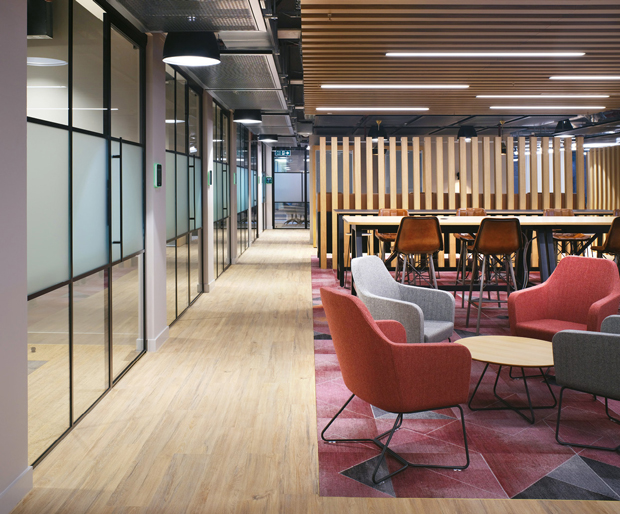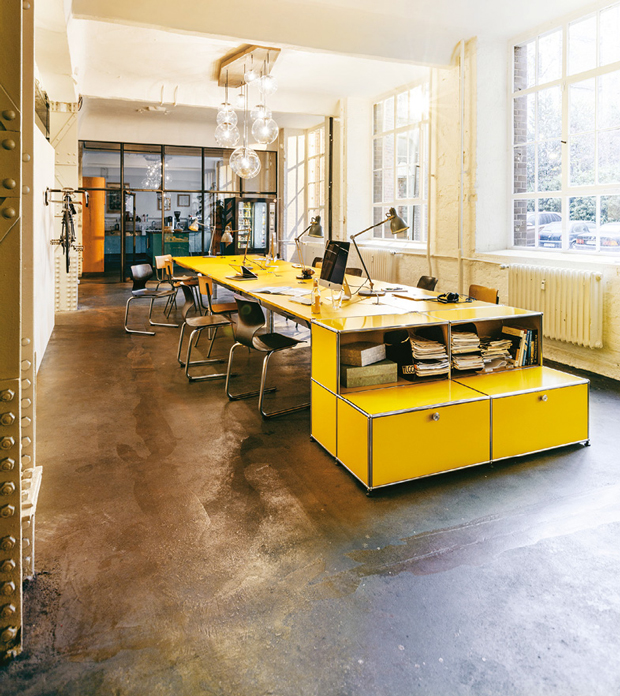Office interior experts describe how the latest furniture designs blend the physical and virtual workplace together and a case study on how to create a truly sustainable workplace
 Pernille Bonser, CEO Resonate Interiors
Pernille Bonser, CEO Resonate Interiors
Q: How can office design help create a harmonious blend of physical and virtual collaboration that supports both in-person and distributed workers?
Great office design is about a blended approach to physical and virtual occupancy. When not in the office we still all need to feel involved and included, which is part of what we at Resonate call the “Work Family” The main tool for this is excellent IT and AV and a good work/home setting.
The in-office presence now needs to accommodate hybrid working, educational spaces, inclusive spaces and a real landmark for the company which ensures staff want to go in, have exceptional services, food provision and can easily collaborate with their colleagues to learn and develop strategies and solutions together.
This is proven by Scientist and Writer Hannah Critchlow in the book ‘Joined up Thinking’ who states that working collectively in the same space creates a “super brain cloud” that encourages people back to the office. This must be a primary objective for all employers.
Q: How can ergonomic design be balanced with flexible working styles, i.e. shared desks/seating, increased use of breakout areas?
We are all shapes and sizes, diversities and cultures, so this must be accommodated in a new flexible and hybrid workplace. It’s a huge challenge to ensure that everyone is catered for and comfortable and can do their best work. As designers we must provide choice, and a variety of settings for any given task, sit stand desking, bar or dining height meeting spaces, soft seating spaces. All linked seamlessly to IT and AV. I also believe that we have become much more accustomed to work in a plethora of different ways and the younger generations do not always see the need for a traditional desk. Workplace design is at a pivotal stage and exciting developments are happening all the time as we lean into this new Hybrid world of headphones and AI guiding us to the best solution for us as an individual.
 Ian Weddell, Sustainability Executive, USM
Ian Weddell, Sustainability Executive, USM
Q: Flexibility is now crucial to support fluctuating occupation levels, what role does modular furniture play in supporting this aim?
Modular furniture plays a significant role in supporting fluctuating occupation levels by offering flexibility and adaptability in various environments. Modularity means the furniture can be easily reconfigured, expanded, or reduced to meet changing needs. Whether you need to add more storage, create new workspaces, or reconfigure existing ones, modular furniture can be adjusted without the need for entirely new furniture. This is particularly useful in environments where the number of occupants can vary significantly.
Look for high-quality materials, to ensure furniture that is designed to last. This durability ensures that the furniture can withstand frequent changes and reconfigurations without losing its functionality or aesthetic appeal. A timeless design will mean it remains stylish and functional regardless of changing trends or office layouts. This makes it a sustainable choice for long-term use.
Overall, modular furniture provides a versatile and dynamic solution to the challenges posed by fluctuating occupation levels, making it an ideal choice for modern, flexible workspaces.
Q: What are the latest innovations in sustainable design?
Circularity is now recognised as the key aspect of sustainable design. USM is committed to becoming a fully circular business, which is why longevity of product is one of the most important strategies for sustainable design. We want our products to stay in use during their entire potential life span and to support our clients in achieving this end.
USM Haller and USM Kitos M product lines have achieved Cradle-to-Cradle® certification, which is a globally recognised standard for products that support a healthy, fair, and sustainable future.
The Science Based Targets initiative (SBTi) endorses products that are manufactured ethically, in an energy-, water- and resource-efficient way, generating minimum greenhouse gas emissions. This helps achieve science-based emissions reduction targets. The highly respected climate action organisation, partnering with several renowned organisations including the United Nations Global Compact and the Word Wide Fund of Nature (WWF), enables companies worldwide to play their part in combatting the climate crisis.






